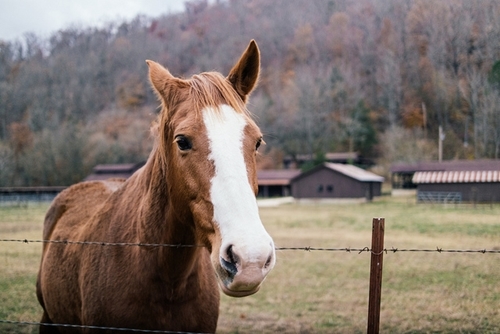Every trainer communicates with their horse in their own special way. From the subtle gestures that help a horse reach its peak performance to a scratch behind the neck that indicates another great job. But while we develop our own special language with our animals over time, there certainly is a science to just exactly how horses communicate with each other, as well as with us. Whether it’s a quick shake of their ear or a quick nod of the head, recent research has indicated the exact facial expressions horses use to convey particular messages to us. Take a look at how the science of horse communication has evolved over recent years:
Eyes and ears
In a study published by the journal Current Biology, equine researchers from the University of Sussex examined exactly how noticing facial cues is essential to understanding horse communication. Jennifer Wathan, a professor at the University of Sussex, led the team of researchers to take extensive photographs of horses while they devoted attention to an object, person or another horse. Wathan and company then compared the facial expressions portrayed by the horse on the pictures with live horses, who were choosing between two feeding buckets to eat from. Some of the photos were manipulated by the researchers, so they could get better insight into what specific facial cues related to feeding.
One group of horses were presented with a picture of a horse with a mask on its face, another with the eyes cut out of the picture and the last group was provided with a normal photograph. The experts noted that the horses seemed aware that they were looking at a picture of an actual horse. The horses who were in the unaltered photo group chose the same bucket of food the pictured horse chose 75 percent of the time. They were able to draw from this procedure that horses obey certain head orientations of its peers to make meal-related decisions.
Wathan elaborated on just how intricate the bodily cues from horses are in terms of how they communicate with the world around them.
“Horses display some of the same complex and fluid social organization that we have as humans and that we also see in chimpanzees, elephants, and dolphins,” Wathan said in a statement. “Previous work investigating communication of attention in animals has focused on cues that humans use: body orientation, head orientation, and eye gaze; no one else had gone beyond that. However, we found that in horses their ear position was also a crucial visual signal that other horses respond to. In fact, horses need to see the detailed facial features of both eyes and ears before they use another horse’s head direction to guide them.”
Reading body language
While vocal cues such as grunts or neighing can be easy to translate, understanding the body language of a horse takes more awareness. A horse’s ears are the primary indicator of body language, and EQUUS Magazine says that every rider should be aware of three distinct ear positions. If your horse’s ears are turned to the side, the animal is in a relaxed state, so abruptly petting it or surprising it may startle the the horse. If the ears are pointed backwards and pinned down to the neck, that usually indicates that the horse is upset, so watch out. However, if the ears are pointed behind it but not pinned down, it basically means the horse is just listening to something coming from the opposite direction. Whenever you notice that your horse’s ears are rapidly swiveling, it typically indicates that the animal is in an elevated state of anxiety or alertness, and is probably overwhelmed at what is occurring around it.
In addition to the ears, the positioning of the head will also provide telltale signs of what exactly the horse is feeling at the moment. Whenever a horse’s head is lowered, it indicates that the animal is in a relaxed mood, and is completely comfortable with its surroundings. If a horse raises its head, it’s shifting into a more alert state, probably due to a noise or movement detected in the distance. This positioning may indicate that the horse could move abruptly at any moment, so bringing its focus back to you can avoid any sudden bolting. Lastly, when you’re riding a horse and notice that it’s shaking its head to the side, the horse could be experiencing some discomfort. It could also be an act of aggression, so you’ll need to try to defuse the situation quickly, avoiding any acts of disobedience.








